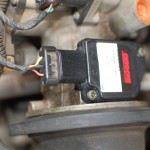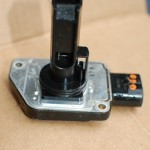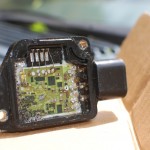
After a couple of days, the light was on again. Time for a replacement. My son did some Internet research and found that someone who had re-replaced the rebuilt unit with a “new” unit and had good results. I got the new OEM part.
Installation of the MAF is straightforward. The only hitch is as a high value part, it has security Torx screws so you are going to need that special driver.
Disconnect the battery. Carefully release the locks on the plug and pull the plug. There are water seals inside so it can be a bit stiff. Slow and steady. Then remove the screws in the corners. Remove the sensor by lifting straight out. Install the new unit. Start, then tighten the screws. Replace the plug. Reconnect the battery.

The Mass Air Flow (MAF) sensor tells the engine control computer how much air is flowing into the engine. The computer uses this along with other inputs to decide mixture and other controls.

Since I bought the new unit, there was no need to return the “core” as with a rebuilt part. So What Is In There? The second picture shows the part of the MAF sensor that is in the intake duct. The air goes through the hole and by that horizontal bit. That is actually a “hot wire” sensor. Heated by a current, its resistance varies by temperature. The more air that flows by the cooler the hot wire and so its resistance comes down. You can see that under the lid there is a fairly sophisticated circuit associated with this device.
